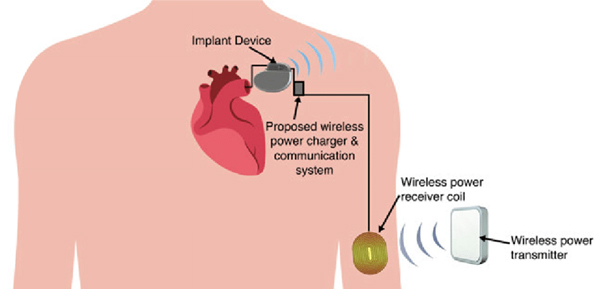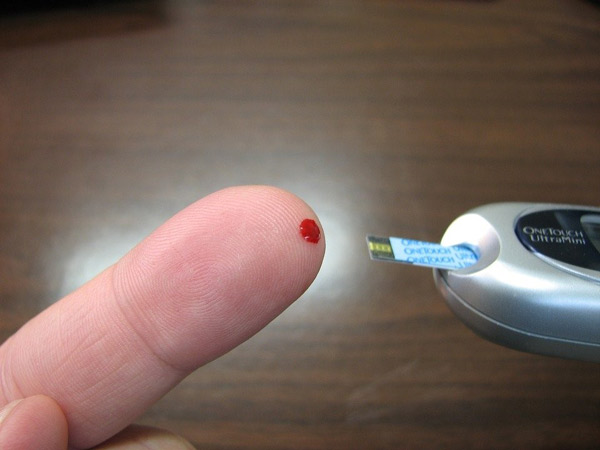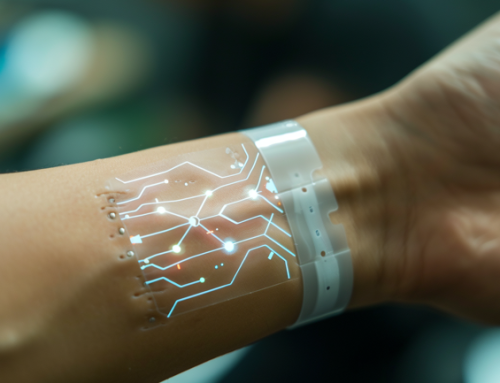Intra-body communication (IBC) is a promising wireless communication technology which provides data from the human body to the medical and sports devices we are used to wear in our daily lives.
In fact, in the last two decades, lots of wearable electronics devices have been developed: various body implants, medical devices to control health parameters and technologies for sport activities which monitor athletes ‘performances are examples of this technology revolution.
Do you know which characteristic these kinds of devices have in common? Even if they serve different purposes, they are all attached to the body. This is the reason why it is important to investigate how this kind of technology can make use of the body to communicate and give back the right data at the right time.
Let’s see how IBC works!

A little bit of history: when intra-body communication was studied for the first time?
The first work in the field of intra-body communication was performed by Thomas Guthrie Zimmerman in 1996: for the first time, Zimmerman talked about Personal Area Networks (PAN), a wireless communication system that allows electronic devices on and near the human body to exchange digital information through near-field electrostatic coupling. Information is transmitted by modulating electric fields and electrostatically (capacitive) coupling picoamp currents into the body. The body conducts the tiny current (e.g., 50 pA) to body mounted receivers. The environment (“room ground”) provides a return path for the transmitted signal. A low frequency carrier (e.g., 330 kHz) is used so no energy is propagated, minimizing remote eavesdropping and interference by neighbouring PANs. Digital information is transferred using on-off keying with quadrature detection to reduce stray interference and increase receiver sensitivity (References: T. G. Zimmerman, “Personal area networks: near-field intrabody communication,” IBM systems Journal, vol. 35, no. 3.4, pp.609–617, 1996.).
The idea of Personal Area Networks (PANs) was contributed to illustrate that electronic devices that were attached near a human body could form a network and exchange data through capacitive coupling. The state-of-the-art method in electronic devices with highly power efficient characteristics and the advancements in the field of wireless communication have expanded new horizons in human body area networks.

Intra-body communication: how it works
IBC is a promising wireless communication technology for the development of body area networks (BANs)
and remote and ubiquitous monitoring. IBC uses the human body as a transmission medium, achieving power saving and miniaturized transceivers, therefore making communications more robust against interferences and immune to attacks on the privacy of transmitted data. Due to these advantages, IBC has been included as a third physical layer in the IEEE 802.15.6 standard for wireless body area networks (WBAN) designated as Human Body Communication (HBC).

Example of Implantable medical device communicates with the external world.
REFERENCES: Asan, Noor Badariah & Augustine, Robin. (2019). Fat-IBC A New Paradigm for Intra-body Communication: A pioneering work on Fat channel communication in human body from my PhD student and Dr. Noor Badariah Asan!
Available from: https://www.researchgate.net/figure/Implantable-medical-device-communicates-with-the-external-world_fig1_337592018
There are two primary methods for signals to be coupled into the body for IBC: capacitive coupling and galvanic coupling. Other, less popular approaches are the inductive coupling and the classical RF coupling.
- CAPACITIVE COUPLING
In capacitive coupling, a signal is applied to a transceiver electrode, and an electric field is build up. This approach mainly aims to maximize the coupling between the transceiver and the human body, thus reducing the interference because of ambient noise.
- GALVANIC COUPLING
In galvanic coupling, a signal is controlled by the applied current flow, while the human body could be considered as the waveguide. In comparison to capacitive coupling, the propagation of the current in galvanic coupling through the body does not involve any return path. Therefore, this method is less susceptible to noise.
- INDUCTIVE COUPLING
In inductive coupling, the electromagnetic coupling is used to provide a communication link to implanted devices, by placing the external coil close to the patient that couples to a coil implanted below the skin surface. The implant is powered by the coupled magnetic field. The best power transfer is achieved in inductive coupling when it is used in large transmitting and receiving coils. Therefore, this method could be used effectively if space is not a constraint
- RF COUPLING
RF based IBC is one of the alternative techniques that can increase the bandwidth and enable two-way data communication.
The advantages of intra-body communication
IBC has many advantages over traditional RF approaches. Because the communication mechanism is based on near-field coupling, transmission is not interfered by electromagnetic waves in free space and signal cannot be intercepted easily, while the signal is confined to the human body. Because the body channel has lower attenuation than the air channel, the power consumption is lower than other wireless technologies, such a Bluetooth and Zigbee. Intra-body communication has a wide application prospect in personal Health Care, assistant system for the disabled, and body area networks (BAN) system. IBC realizes a short-range “wireless” communication method with less electromagnetic interference and less susceptible to external interference in comparison with existing electromagnetic wave based communication technique. IBC promises to improve the Health Care systems. It is also expected that IBC can eventually help to reduce the size of the sensors on human body, less power consumption, as well as improve stability of overall Health Care system.
IBC may also contribute to endless opportunities in the field of healthcare services by connecting various on/in-body devices to form the BAN of personal health information. For instance, patients with diabetes could use an automatic insulin pump which autonomously measures glucose levels and administers insulin upon high levels of glucose. A sensor, which may be developed in the future, may reduce the occurrences of heart attack or stroke, decreasing the burden from hospitals by avoiding frequent patient visits.

Next generation IBC: Fat-IBC
The transmission of data out of many parts of the body is a challenging process, further research is needed, and challenges remain for an optimal deployment of IBC technology, such as the effect of long-term use in the human body or the communication optimization through more realistic models.
Uppsala University (Sweden) has pioneered the novel Fat-IBC technique, which uses the omnipresent fat tissue in human body as a resilient channel to communicate in the microwave frequency range thus supporting higher band width and transmission efficiency. The inherent fat channel in human body provides an excellent low-loss communication medium for implantable and wearable sensor networks.
The Fat-IBC approach is unique and fully developed at Uppasala University. Prime importance has been given for network security to ensure safety of the user. Fat-IBC would benefit much from the use of stretchable electronics and holds promises of small-sized and energy-efficient devices with secure communication at increased data rate.
Fat-IBC methodologies will be used in SINTEC project and they will be applied to the smart patch that researchers are developing. A stretchable substrate based on a novel soft, stretchable and sticky silicone material will provide compliant and comfortable, intelligent and wireless patches on the skin that will not move relative to the skin even at excessive movements and strong sweating. This gives strong advantages in Fat-IBC and electrophysiological evaluations, and especially so when applied in sports and outdoor activities.
Curios to know more about Fat-IBC technology? Read our next article >>








Leave A Comment